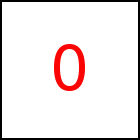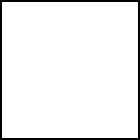Controller Class
The controller is responsible for user interactions, mostly
while an animation is running. So for example the controller
could (1) block all mouse clicks during an animation, could (2)
terminate an animation on a mouse click, (3) send the mouse
clicks to the remaining real HTML elements on the screen, or
(4) interpret mouse events to e.g. rotate (part of) the
animated scene. Of course you can also add your own methods to
the controller to customize the bahaviour. The current version
of taccgl™ can, however, not detect mouse clicks on animated
elements or objects.
There is only one active controller at a certain point
in time. You can however have multiple inactive controller
objects and from time to time activate one of them to change
the behaviour.
Using forwardingController, blockingController,
or transformController you can create a controller
object. Then with useController a controller can be
activated.
On the rest of this page we discuss some special issues of
the controllers. As a first time reader we recommend to
first read the documentation about the specific controllers
linked above.
Internal working of the Controllers
Technically animations run in an HTML canvas element that
usually has the full window size and is located in front of
most of the other elements of the page. Because often, however,
big parts of the canvas are transparent, the HTML elements
behind it appear anyway. Per default, however, HTML routes all
mouse events to the animation canvas, regardless if HTML
elements behind it are visible or not. It is the task of the
controller to processes various events of the animation
canvas. Most notably these are the mouse events like onclick
etc.
Solving the Mouseover Problem
Browsers usually get confused w.r.t to the mouveover and mouseout events by the
taccgl™ 3D canvas: When taccgl™ makes the 3D canvas visible/hidden in front of the
HTML page, some browsers think that the mouse moved onto/out of the 3D canvas, although
the mouse in fact did not move. This results in extra mouseover and mouseout events.
The controllers have some helper methods that can be used to ignore these extra events,
Controller.instMouseOverFilterClass,
Controller.instMouseOverFilter, and
Controller.automaticMouseMoveOut.
Methods of the Controller Class
The following methods are shared among all controllers. In addition some individual controller
types have specific methods while others do not have any methods, e.g. the forwardingController
and the blockingController.
WebGL™ is a trademark of the Khronos Group Inc.
| 




